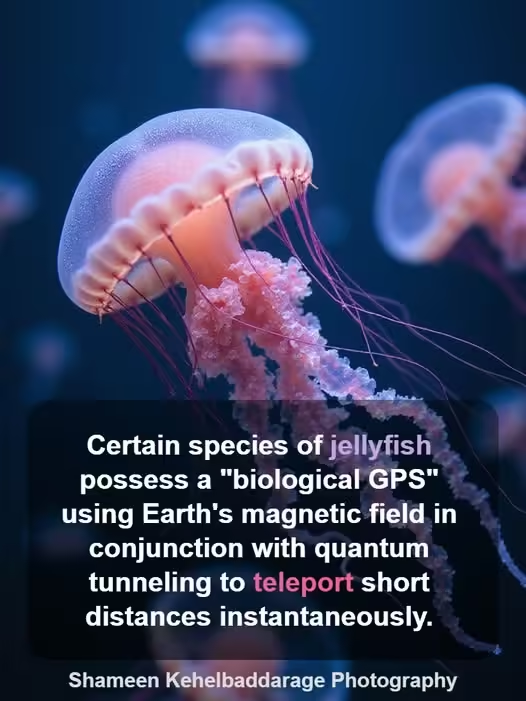
Jellyfish and Quantum Physics: Nature’s Mysterious Navigators
Jellyfish have been drifting through Earth’s oceans for over 500 million years, long before dinosaurs roamed the land. With their ghostly grace and silent elegance, they’ve always been mysterious creatures—but now, scientists are discovering that jellyfish may be far more extraordinary than we ever imagined. Recent research suggests that certain jellyfish species might not just float—they could be using principles of quantum physics to move in ways we never thought possible.
A Leap Through Physics: Quantum Tunneling in Nature?
Quantum tunneling is a phenomenon from the strange world of quantum mechanics where particles pass through barriers that should be impenetrable, according to classical physics. It’s a process that underlies everything from nuclear fusion in stars to modern electronics.
But what if jellyfish—simple, brainless animals—have somehow tapped into this bizarre principle of physics?
Some researchers now believe that select species of jellyfish may exploit quantum tunneling in their movement. Observations suggest that these creatures don’t just passively drift with ocean currents; instead, they exhibit motion patterns that defy traditional biological and physical explanations. Could it be that they’re “teleporting” short distances by bypassing the conventional limits of space and time?
Guided by Earth’s Magnetic Field
Jellyfish are known to respond to the Earth’s magnetic field, but the idea that they might use it to facilitate quantum tunneling is a thrilling possibility. In theory, their gelatinous bodies—which are rich in unique proteins, salts, and conductive fluids—could interact with magnetic fields in such a way that it sets up the perfect conditions for quantum behaviors.
By entering a state of quantum superposition, where they exist in multiple positions or paths simultaneously, they may momentarily “choose” the most efficient location and materialize there—essentially skipping over the space in between.
Biology Meets Quantum Mechanics
If proven, this would place jellyfish in a very rare category of organisms that exploit quantum mechanics for survival. Other examples include migratory birds, which may use quantum entanglement in their eyes to navigate, and certain bacteria that perform quantum-level energy transfers.
What makes jellyfish especially compelling is that their behavior challenges our assumptions about intelligence and complexity. Without brains or a central nervous system, they might be using raw physics—not cognition—to master the vast oceans.
The Bigger Picture
The idea of jellyfish using quantum tunneling remains speculative, but it opens up fascinating new avenues for research. If confirmed, it could revolutionize our understanding of both marine biology and quantum biology—a relatively young field exploring how living organisms might leverage the weirdness of quantum physics.
It also challenges us to think differently about life itself. What if many creatures we consider “primitive” are actually in tune with natural forces in ways we don’t yet understand?
Conclusion: Drifters or Quantum Pioneers?
Far from being passive ocean drifters, jellyfish may be pioneers of a hidden frontier—a place where biology and quantum physics intersect. While more research is needed to fully understand these processes, one thing is clear: the ocean still holds secrets that could rewrite the rules of science.
In the end, jellyfish remind us that the natural world is not just beautiful and mysterious—it may also be far more intelligent in its design than we ever imagined.
